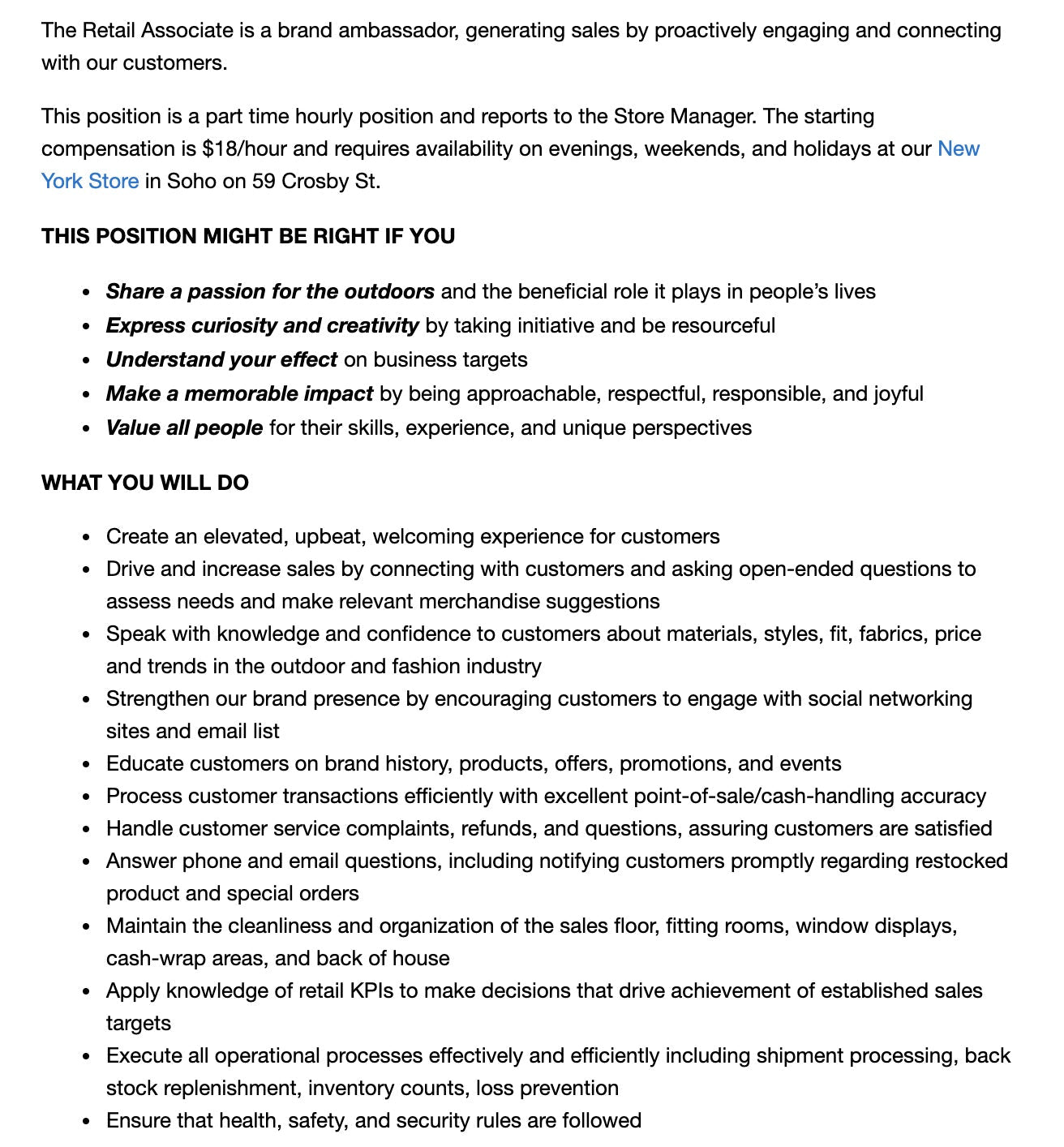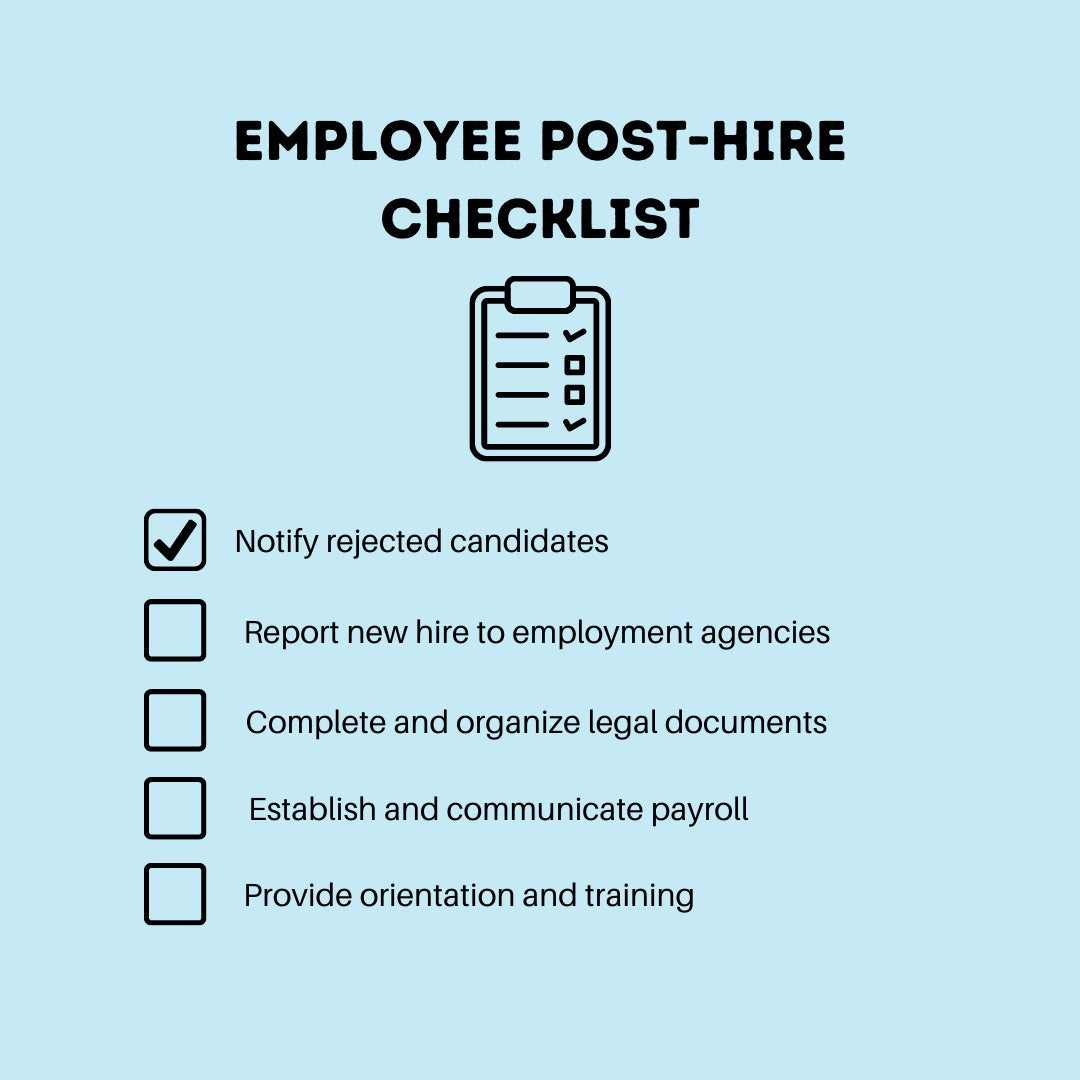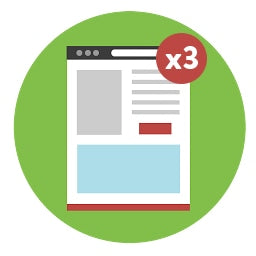Finding and hiring good talent is not an easy task. In fact, nearlyseven in 10 employershave reported talent shortages and difficulty hiring—the highest level reported by ManpowerGroup over the past 15 years.
Yet hiring employees is fundamental to the success of your business. Having an outstanding team of store staff can help sell more products, improve productivity, and serve customers better.
The big questions are: How do you find top talent? What’s the best onboarding process?
This guide covers how to hire employees, including the best practices for retail stores.
Create unlimited POS staff accounts with Shopify
As your business grows, so will your team. With Shopify POS, you can add as many staff accounts as you want. Assign unique login pins to staff, assign custom roles and permissions, and more.
How to hire employees in 8 steps
- Take care of legal matters
- Decide if you need full-time or part-time employees
- Create a job description
- Find job candidates
- Review applications
- Conduct interviews
- Extend a job offer
- Follow a post-hiring checklist
1. Take care of legal matters
Before you begin the hiring process, we recommend that you read theSummary of the Major Laws of the Department of Labor. There are over 180 federal labor laws and regulations you must follow to stay compliant with federal and state governments. Here are a few tips to help prepare your business legally:
Get an employer identification number
Before you hire anyone (and in order to set up payroll), you’ll need to get an employer identification number (EIN) from the IRS. EIN’s are also known as an “employer tax ID.” You use it to report taxes and other information to your state agencies and the IRS.
Apply for an EINon the US government website, and task number one is complete!
Register with the labor department
Some state and local governments require businesses to have ID numbers for tax purposes. Contact your local and state government official to find out if you need a tax ID number.
Depending on your labor department, it might be good to keep the following information on hand:
- Federal employer identification number
- Business structure
- Business name
- North American Industry Classification System (NAICS) code
- The number of full- and part-time employees your business has, including the owner
- The date of first payroll for employees (if possible)
- Business mailing address
- Principal business address
- Address you want unemployment claims sent to
- Contact information of key individuals (which can include the owner, partners, LLC members, CEO, or corporate officers)
Organize your tax forms
You’re responsible forfiling taxesand reports on behalf of your team as an employer, so it’s important to be aware of the varioussmall-business tax deadlinesyou’ll need to meet. You’ll want to keep the following information on hand for each new employee you hire:
- Full name
- Employment start or termination date
- Tax filing number (Social Security number or EIN)
- Date of birth
- Current address
- Compensation details
- Form I-9,to verify employment eligibility in the US (both employee and employer must complete this form)
- Form W-4, for employers to determine how much federal income tax should be withheld from an employee’s paycheck
Businesses should hold their employment tax records for six years minimum to support their tax filing. Setting up a system to manage these forms helps you prepare tax returns and manage business health over time.
The IRS also has anEmployer’s Tax Guide, which offers guidance on all federal tax filing requirements that could apply to your small business. You should also check with your state tax agency for any employer filing specifications.
Get workers’ compensation insurance
Workers’ compensation insurance helps cover lost wages and medical expenses for your business if an employee gets injured or becomes sick. This insurance can include rehabilitation services and death benefits, too.
Most states require any business with one or more employees to have workers’ comp insurance. It’s an easy way to protect your business and yourself from unexpected accidents and business interruptions.
Workers’ compensation insurance varies by business. You can get a free quote online through companies likebiBERK.
Create a compensation plan
To attract and retain top talent, you want to have an attractive compensation package in place.
Your compensation plan will consist of two parts: direct compensation and indirect compensation. Direct compensation refers to what you’ll pay an employee: i.e., salary, hourly, or on commission.
Indirect compensation includes any fringe benefits you’ll offer, such as mental and dental insurance, disability, and retirement programs like a 401k.
Some examples of indirect compensation include:
- Paid holidays
- Vacation days or paid time off (PTO)
- Disability income protection
- Flexible working hours
- Promotion opportunities
- Student loan assistance programs
- Assistance with child care expenses
- Career development
- Company equipment
A compensation plan is how you lock in valuable employees. Take the time to develop a thorough program and communicate it to candidates during the interview process.
Choose a payroll software
Are you planning to use a spreadsheet to manage payroll? Or will an online software make more sense? Managing payroll can be tough, with business owners spendingsix to 10 hourson payroll each month.
你想要研究不同的选项和设置up a payroll management method that saves you time and keeps you compliant.
Here are some payroll apps that work with Shopify POS, listed in no particular order:
When choosing the best payroll software, ask other business owners what they recommend and look at reviews online. You could also outsource payroll to a company or hire a part-time bookkeeper to manage it.
LEARN MORE:For more tips on managing payroll, readHow to Effortlessly Manage Payroll as a Store Owner.
2. Decide if you need full-time or part-time employees
A full-time employee is someone who works between 30 and 40 hours per week. Part-time employees usually work less than 30 hours per week.
It’s common for small business owners to question whether to hire full-time or part-time employees. Many owners use both as their business grows and demands more from your store. Hiring full- and part-time employees both have pros and cons:
- Full-time employees.Hiring full-time employees comes with benefits like better planning, increased productivity, and more loyal and engaged employees, but benefit costs and overstaffing issues if you’re going through a quiet period can eat away at your profits.
- Part-time employees.You could start by hiring part-time employees to keep your costs down, maintain flexibility, and make sure you have additional staff only when you need it (e.g., during business seasons). But hiring part-time employees can lead to inconsistency and a higher turnover rate, as well as less experienced employees.
总的来说,full-time employees offer security in scheduling and consistency in labor management. They have a similar weekly schedule and number of hours each pay period, health-care benefits, and vacation time. Part-time employees offer flexibility with staffing levels because they don’t have guaranteed hours or benefits.
3. Create a job description
If you want to attract qualified candidates to your job, you need to create a compelling job description that summarizes the responsibilities and qualifications for an open position.
With over250 million jobsavailable on sites like Indeed, a great job description can help your job stand out. The goal is to provide enough information that keeps candidates interested in your business, while remaining concise and easy to understand. An effective job description will help candidates determine if they are qualified for the role.
Make sure your job description includes:
- Title.A short and specific job title that won’t confuse potential candidates—for example, for a store associate “Retail Shop Assistant” is much clearer than a seemingly clever job title like “Retail Jedi.”
- Summary.Open with a strong summary about the position that defines the role you’re hiring for and what expectations you have for the job.
- Company culture.An overview of your company culture, or the set of behavioral and procedural norms that one can find in your business. This is an important, yet commonly overlooked, part of creating a job description. According to an Indeed survey,72% of job seekerssay it’s extremely important or very important to see details about a company culture.
- Responsibilities.Outline the core duties of the role. Make sure this list is detailed but concise, highlighting the day-to-day activities of the position, and communicate how the tasks will impact your business and customers.
- Requirements.You’ll also want to include a list of hard and soft skills that you’re looking for in a successful employee. Include any previous job experience or education needed, as well as skills like communication and problem solving you require for the role.
- Salary and benefits.Don’t leave candidates in the dark on their potential earnings. Qualified candidates will look for roles that meet their salary needs. At minimum, include a salary range and list of top perks and benefits to help candidates decide if the job offer is right for them.
PRO TIP:With Shopify POS, you can assign differentroles and permissionsand set boundaries on what store staff can do in your POS system without manager approval—like changing a product’s price or applying a custom discount to a sale.
Outdoor lifestyle brandSnow Peaktakes this one step further. It includes a section in its Retail Associate job ad that communicates the exact soft skills needed for the role under its “This Position Might Be Right If You” section.

Snow Peak also adds “Must Have”and “Nice to Have” lists to help candidates decide if they are qualified for the role. For example, the brand prefers employees with experience using Shopify, working in outdoor and retail industry, and understanding Japanese language and culture.

Try a free 3-day trial of Shopify POS to manage staff roles and permissions for your growing team!
4. Find job candidates
At this point, you’re set on hiring an employee. That’s great news! The next step is finding good candidates to fill the position. Here are five places where you can find the best talent for your role:
- Job boards
- Social media
- Your own network
- Recruiters
- Professional groups and associations
Job boards
The first place to look for job candidates is a dedicated job board or website. When it comes to candidate preferences,60% of job seekersuse jobs boards, compared to 50% who use word of mouth. So let’s take a look at some popular job boards:
- Indeed. Posting a job on Indeed is fairly simple withthis guide. It’s also free, unless you decide to pay to sponsor your job post for better visibility.
- CareerBuilder.This one uses AI data to automate insights on your ideal candidate, but it comes at a cost starting at $219 per month (or $197 per month if paid annually) for one job posting.
- Glassdoor. Technically speaking, Glassdoor isn’t a job board where you can post jobs natively on the site. But since it’spartnered with Indeed, it’s worth setting up a Glassdoor company profile for the extra visibility and social proof that comes with employee reviews. A basic account is free, but you can opt for paid features, such as featured reviews, by contacting the sales team.
- Monster. As a hiring manager, Monster’ssearch platform—which ranks and scores candidates based on your criteria—can help you save time. It also shows you your best matches first. This one offersfour-day free trials,但之后,价格从279美元/月foOB欧宝娱乐APPr one active job (and unlimited applications).
- Snagajob. This site specializes in recruiting hourly workers and has more thansix million userssearching the site every month. Similar to other job board sites, it uses “match” technology to help you find the right candidates quickly. It’s cheaper than many other sites—at$89 per month per post, it gets you a lot of the same features as other, higher-priced services.
Social media
Finding candidates through social media can save you both time and money (given the costs of many of the job boards detailed above). In fact, a survey conducted by theJob Description Libraryfound that, in 2021, 79% of job seekers used social media in their search in the past year.
Let’s look at each major social network platform from a hiring manager’s perspective:
TikTok
Video-sharing platform TikTok has become the place for finding and hiring Gen Z employees, many of whom are part-time hires. With the rise in career and job-related content on TikTok, the platform launched “TikTok Resumes,” a program designed to expand TikTok as a main channel for recruitment and job discovery.
TikTok与Ch等受欢迎的雇主ipotle, Target, Alo Yoga, and Shopify, and invited job seekers to apply with a TikTok video résumé. All candidates can be found through the dedicated hashtag #tiktokresumes. Both big and small companies can browse the hashtag channel and watch applicants show off their skills through creative, entertaining videos.
While it was almost considered in the above job boards section, technicallyLinkedInis a “professional social network” site. According to its own data, someone is hired through LinkedInevery eight seconds.
It’s one of the go-to places for job candidates to showcase their experiences and network with other professionals and hiring managers alike.
As the second most used app for job seekers (at57%), Twitter is hard to ignore, especially if you’re looking to hire freelancers, contractors, or casual workers. The most common method of attracting talent through Twitter is to write a well-composed tweet and link to your company site’s vacancy page.
However, if your company is a small business or a startup, many owners will post about their opening asking for potential candidates to send them a DM.
As the social network platform with the most monthly active users (over 2.9 billion), and the largest percentage of them being between the ages of18 and 44, it also makes sense to consider Facebook to find job candidates.
On Facebook, you can create job posts through your business page and, if you want, you can boost the job listing as an ad.

However, one other effective way to hire through Facebook is looking for Facebook groups or job searching groups, in your industry, and posting about your job openings in those.
Each social media platform will have different types of active users, so be sure to research and compare what kind of employee you want versus the candidate pool of social media users.
Your own network
Searching through your personal and business networks is an effective way to start your candidate search.
We mentioned earlier that50% of job seekersuse word of mouth to find their perfect job, so in a lot of cases, your perfect candidate might be hiding in plain sight. After all, you work in your industry, and you’re very likely to know other people who do too.
While this is the least formal method of candidate searching, there are still two main steps you can follow as a starting point:
- Ask your personal network (friends and family). There is common advice out there against hiring friends or family members, but that’s not to say you can’t ask them if they know anyone who is looking for a job. This type of warm referral can cut down hiring time (and costs) significantly. If you don’t manage to find any referrals this way, you can always turn to your personal social media account and ask your wider network.
- Ask existing employees.If your business is on the larger side (you already have a few or more employees), you can ask them to find candidates in their networks. It follows the same logic as above that suggests since they work in your industry, they’re likely to know others who do too.
If you’re not getting many referrals this way either, do what a lot of companies do and provide bonuses or other incentives (like a competition) for finding qualified candidates who successfully fill your position.
Recruiters
One of the other most common methods of finding new job candidates for business owners is hiring specialized recruiters or recruiter firms.
This method has several advantages, here are a few:
- Recruiters save you time.If you don’t have a dedicated hiring manager, recruiters can take on searching and interviewing candidates so you don’t have to.
- They can expand your network.If your personal or business network is too small, recruiters can tap into their huge networks to find the best candidates.
- If you’re new to hiring, they can help you through the hiring process.If you’re hiring your first employee, a recruiter can help you understand the processes better, since they have more experience.
Some of the best recruitment agencies in the US include:
Bear in mind that many recruitment agencies will specialize in specific sectors, having developed networks in those industries. If you’re looking for a specialized role, try searching for agencies that serve your niche.
Professional groups and associations
Sourcing job candidates through professional groups and associations isn’t normally a quick fix for you to fill an immediate need. Instead, you’ll want to build long-term relationships with these groups to grow and maintain industry connections. Some professional groups and communities include:
- Ecommerce Experts
- Female Entrepreneur Association
- Female Founder Collective
- eCommerce Fuel
- Meetup’s Small Retail Business Owners Groups
5. Review applications
After gathering a list of potential candidates, the next stage of the hiring process involves reviewing applications and résumés so you can narrow them down and only interview potential employees who stand out.
Depending on the number of job applications you’ve received or the applicant tracking software (ATS) your business uses, this could be one of the longest parts of the process.
Before you even start reviewing, you’ll need to be in the right mindset and be aware of potentialunconscious biases. After preparing yourself mentally, let’s take a look at the practical review steps:
- Separate unqualified résumés.
- Look for any customized cover letters or other tailored messaging.
- Look into the details. Do they use vague language? Do they offer specific examples of past successes?
- Keep an eye out for potential red flags. Are there considerable employment gaps? (Not necessarily a bad thing, but you’ll want to discuss it at an interview.) Lots of jobs in a short period of time? No increase in responsibilities?
If you have industry-specific requirements or wants, then be sure to add those to your application review checklist.
PRO TIP:Want to control which staff can count, receive, and adjust inventory quantities? Setroles and permissions设置边界人员能做什么和不能做when logged in to your POS system, like accessing its inventory management tools.
6. Conduct interviews
After narrowing down your list of candidates to those you would potentially hire, it’s time to prepare for the interviews. You’ll need to have the same list of questions you want to ask each candidate (with some room for ad hoc questions specific to each).
If you’re struggling to think of questions to ask, here’s a list to get you started:
- What do you know about our company?
- Why do you want to work here?
- What is your work availability and expected start date?
- What salary range are you expecting?
- Can you tell me about your current position?
- What strengths or skills can you bring to our company?
- What are your weaknesses?
- Tell me about a project you’ve worked on that you found interesting, and why.
- Where do you see yourself in five years?
- How would your coworkers describe you? Would your boss describe you differently?
- Can you talk about a time when you had a disagreement with your boss or coworker?
- Has there ever been a time when your actions directly contributed to the success of your team? Tell me about it.
- Do you work best alone or as part of a team?
- 你认为你目前的公司可以做吗improve their success? (If they’re coming back to employment after a gap, you could ask if they have any opinions on how your company could improve.)
- Why are you leaving your current position or coming back to employment now?
Beyond the minimum of verifying credentials and on-paper experience, these questions can help you gain a better understanding of how the candidate thinks and how they might perform in their new position.
PRO TIP:During the interview process, keep an eye out for red flags like poor listening skills, lack of specific examples, leaving jobs due to disagreements, and arriving late or unprepared, to name a few.

Free Guide: Interview Questions for Hiring Retail Employees
Hiring competent retail employees is becoming increasingly challenging. Use this guide to ask the right questions during the interview process to ensure you hire the right people for your store.
Get our guide Interview Questions for Hiring Retail Employees delivered right to your inbox.
Almost there: please enter your email below to gain instant access.
We'll also send you updates on new educational guides and success stories from the Shopify newsletter. We hate SPAM and promise to keep your email address safe.
Length of interview process
Naturally, one of the main variables for defining the length of the interview process is the responsibility of the position you’re hiring for.
实习生的面试过程或入门级position, typically a single interview, is going to be shorter than that of a C-suite executive with multiple rounds of interviews. Ultimately, the interview process should be smooth and efficient.
“The recruitment process must be ultra-fast and straightforward,” says Jean Simon Bolduc of Folks. “In retail, we are often dealing with younger candidates, and we need to keep things moving, otherwise they will lose interest and go elsewhere. That’s where technology comes in. Applicant tracking software is a great tool that allows candidates to fill out a form online or on the spot on a tablet to apply, even without a résumé.”
That being said, there are a few standard practices in terms of the process length for different types of interviews. Choosing how many of them to use depends on your business’s needs and the position.
- Initial phone or video interviewsto cover the basics (typically 15 to 30 minutes).
- In-person interviewsto get to know each other better ( anywhere from 45 minutes to a whole work day).
- Technical interviewsfor roles thatrequire a certain level of technical ability, such as engineering or automation building (generally from 45 minutes to an hour or so).
- Group interviewsare helpful if you’re hiring for a position that doesn’t involve high responsibility or specialization (typically about an hour).
In most cases, you’ll find that initial phone or video interviews combined with a single in-person interview is enough to determine the suitability of candidates. However, if you have several promising candidates, you might want to also add a group interview to see how they manage communication with others alongside the interviewer(s).
7. Extend a job offer
After everything you and the candidate have been through, letting them know they are getting the job is an exciting and celebratory moment. A common question now is what steps to take to deliver the offer.
Run a background check
Background checks are normally done during the pre-employment process for job candidates.
It’s an important step in the hiring process because it reveals any convicted felons or misdemeanors and any reports from Homeland Security, Drug Enforcement Administration, the FBI, and the National Sex Offender Registry database. It also checks for criminal convictions or legal issues from a candidate’s past.
Done right, a background check can give you peace of mind before offering a job. Considering53% of job applicantsprovide inaccurate information, it’s a good way to make sure you’re hiring a solid employee. Background checks should only be done by a legally compliant third-party provider.
Some quick and easy background check sites to use are:
Gather information about the candidate
One common mistake business owners make is not tailoring the offer to the candidate. If you’ve followed this guide so far, you’ll have collected enough information to make the offer more suitable for the candidate.
For example, candidates may have prior obligations before starting with your business. Knowing when they can start will help you send a more attractive offer.
Make an informal verbal offer
Once you’ve gathered their information, test whether the candidate is interested in the new role. Give them a call to see if they are likely to accept. This will help both the candidate and you work out any details before you make a formal offer.
Ask questions such as:
- Do you have any questions or concerns about this role?
- After learning more about the job, do you think you’d accept an offer?
- If you receive another offer, would you consider accepting?
If you are happy with their answers and are confident the candidate is the right fit, make a verbal offer on the phone right there. Reiterate the salary and provide any additional information the candidate may need to accept your offer.
Send an offer letter (via email)
If a candidate says yes on your phone call, follow up with a formal offer via email. Draft a document that covers:
- Job title
- Primary duties
- Salary
- Expected schedule
- Benefits
- Time off policy
- Conditions of employment
Explain the next steps the candidate should take to formally accept the offer. This helps overcome any obstacles they may have and can speed up the hiring process. Make yourself available to answer any questions.
Not sure what to say in your email? Download ourjob offer template.
Check in and follow up
If you don’t hear back from your candidate in the first week, you’ll want to check in and see how things are going. Follow up to see if they received the paperwork and need any help.
8. Follow a post-hiring checklist
Once you’ve made the offer and secured your new hire, it’s time to start organizing and completing your post-hiring obligations. Most of these tasks are legally required, while some others are best practices.

- Notify rejected candidates.A simple email or phone call is sufficient.
- Report your new hire to relevant state employment agencies. This is required, per the Personal Responsibility and Work Opportunity Reconciliation Act (PRWORA). You normally have 20 days to do this, but some states require notification sooner.
Complete legal documents.Your new hire should complete the W-4 and I-9 forms shortly after accepting your offer of employment. Also ask your new employee to fill out the following documents before their first day:
Employment contract
Direct deposit form to receive payments
Employee handbook to review before start date
State tax withholding form (if required separately from W-4 by the state)
Company-specific forms, such as non-disclosures or non-competes
一旦你收集所有需要的表格,你ll need to securely store them either physically or digitally.
Establish or communicate payroll policy.Some states have minimum and maximum payroll schedules thatyou can checkbefore defining the schedule for your business. It’s best to figure this out before you start hiring employees. You can email the details to new hires including the payment schedule details and requirements for correct payments (e.g., clocking in and out) to make sure you’re on the same page.
Provide orientation and training.The final step of hiring a new employee is, of course, orientation andstaff training. Large companies are now investingmore hoursinto employee training than ever before.
Common-knowledge-based orientation and training for retailers include overviews of the business, its values and expectations, andsensitivity or diversity training. More practical training exercises involve how to use company equipment and software.
PRO TIP:Encourage store staff tosend the carts they save to no-showsby email at the end of their shift. This is an accessible way to recover abandoned store sales and attribute more revenue to your store–even if the transaction happened online.
Hiring employees for your retail store
Whether you’re a new business owner hiring your first employee or a seasoned vet hiring employee number five, if you’re checking the boxes above, you’ll find the best fit for your retail store. With this guide in hand, you’ll be well on your way to creating a smooth hiring process that attracts the right people, so you can build a profitable and sustainable retail business.
Additional research and content fromAlexis Damen.
Effortlessly train new staff with Shopify POS
Shopify’s easy-to-understand interface makes onboarding new staff simple. Customize your home screen to look up products, check in-store pickups, apply discounts, and process sales faster.
Start your free trialHiring employees FAQ
What is the best way to hire employees?
How do I hire an employee for the first time?
- Understand the legal requirements:Familiarize yourself with the federal, state, and local laws that regulate hiring, such as the Fair Labor Standards Act (FLSA) and Title VII of the Civil Rights Act. This will help you ensure that you comply with all the applicable laws and regulations.
- Decide on job responsibilities:Create an accurate job description that outlines the duties and responsibilities of the role. It’s important to be as specific as possible so that you can find the right person for the job.
- Post the job listing:Promote your job listing on job boards, in newspapers, and on social media. This will help you reach a wider pool of qualified candidates.
- Recruit and screen applicants:Once you receive applications, review them carefully and interview the best candidates. Ask questions related to the job and the applicant’s qualifications.
- Make an offer:Once you’ve identified the best candidate, make an offer and send them an official employment contract.
- Onboard the new employee:Provide orientation and training materials to the new hire. Ensure that they understand their job duties and company policies.


